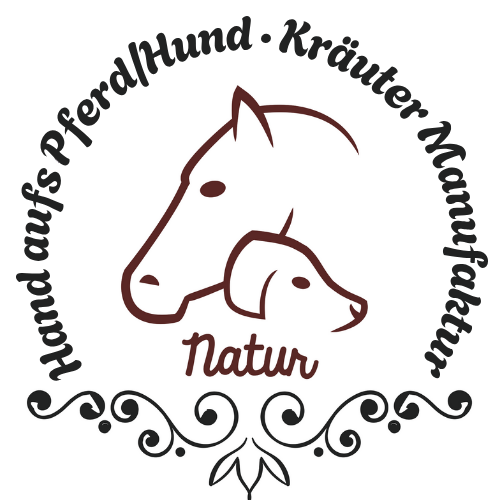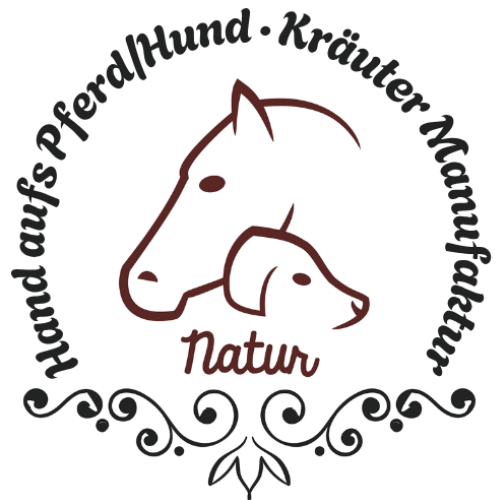
Colic in horses – what is it?
Share
A rash, also known as rhabdomyolysis or tying-up syndrome,
is a serious disease in horses that leads to the destruction of muscle cells. This causes muscle pain and stiffness, especially in the back and croup area. Colic can be mild or acute and is often caused by overexertion, stress, electrolyte imbalance, dehydration, or metabolic disorders.
The exact symptoms can vary, but common signs include:
- Stiffness and muscle weakness
- Pain and hardening of the muscles
- Sweating
- Accelerated pulse and breathing
- Darkening of the urine due to the excretion of muscle breakdown products (myoglobin)
- In severe cases, a complete stop of movement due to pain and tension
Coeliac disease is an emergency situation, and a veterinarian should be called immediately to ensure appropriate treatment. Treatment may include the administration of fluids, pain medication, and muscle relaxants, as well as appropriate feeding and rest. To prevent coeliac disease, it is essential to gradually increase horse exercise, ensure adequate recovery periods, and maintain electrolyte balance and appropriate feeding.
Types and characteristics of the cruciform cleft
There are different types and manifestations of colic in horses, and classification is often based on the underlying cause or the pattern of the disease's manifestation. Here are some of the common classifications:
- Chronic form : This form occurs recurrently or is long-lasting and is often associated with Metabolic disorders such as polysaccharide storage myopathy (PSSM), a genetic disease.
- Sporadic form : This form of colic occurs occasionally and often in connection with unusual strain or stress in horses that are otherwise healthy.
- Polysaccharide storage myopathy (PSSM) : A genetic disorder in which horses have difficulty properly processing stored carbohydrates in their muscles. These carbohydrates (glycogen and abnormal polysaccharide) accumulate in the muscle fibers, leading to stiffness and pain.
- Recurrent exertion rhabdomyolysis (RER) : A hereditary form that occurs primarily in racehorses. It is characterized by recurrent episodes of muscle stiffness, weakness, or cramps.
- Myopathy due to electrolyte imbalance : An imbalance in the minerals calcium, magnesium or potassium, for example, can also cause colic.
Depending on the type of lumbar spine, nutritional status, fitness level, and the underlying cause, the condition can manifest itself with different symptoms and vary in severity. The spectrum ranges from mild muscle pain after exercise to severe episodes that can lead to severe muscle stiffness, shortness of breath, and dark urine. In severe cases, it can even lead to collapse and acute life-threatening symptoms.
How to recognize a colic in a horse
Diagnosing colic in horses is based on observing the symptoms associated with the condition. Here are some signs to look out for:
- Muscle pain and stiffness : After work, the horse may show stiffness, especially in the back muscles and croup.
- Muscle weakness : The affected horse may be visibly weaker than usual and have difficulty moving its hind legs.
- Visible muscle twitches : Horses with colic may exhibit uncontrollable muscle twitches in the affected areas.
- Sweating : Excessive sweating can be another symptom, even without exertion.
- Unwillingness to move : The horse is reluctant to walk and often shows a 'sawhorse-like' posture with the legs stiff and spread wide.
- Hardening of the muscles : By feeling the muscles, hardening or thickening of the affected muscle areas can be detected.
- Dark urine : Due to myoglobin excretion resulting from the breakdown of muscle cells, urine may appear dark brown to red.
- Changes in pulse and Respiration : Increased heart rate and respiratory rate may occur even when the horse is not active.
- Restlessness or anxiety : The horse may show signs of stress or pain such as restlessness or defensive behavior.
Causes of colic in horses
Colic in horses, also known as equine rhabdomyolysis, can be triggered by many different factors. Here are some common causes:
- Overexertion : Extreme or unusually intensive training can lead to colic, especially if the horse is not adequately prepared.
- Electrolyte imbalance : A deficiency or imbalance of electrolytes such as potassium, calcium and magnesium can disrupt important muscle functions and lead to muscle breakdown.
- Dehydration : Lack of fluids can disrupt electrolyte balance and impair muscle function.
- Nutrition : A diet high in carbohydrates or with inappropriate feed ingredients can cause colic in some horses.
- Metabolic diseases : Genetic predispositions such as polysaccharide storage myopathy (PSSM) or recurrent rhabdomyolysis associated with stress (RER) can increase the risk of colic.
- Hypothermia : Exposure to cold or abrupt changes in temperature can also provoke colic.
- Infections and diseases : Systemic infections or diseases can cause stress on the body and lead to muscle inflammation.
- Drug effects : Some drugs or toxins can cause muscle damage and thus lead to colic.
- Lack of recovery : Inadequate rest periods between training intervals can promote muscle damage.
- Muscle fatigue : Tired muscles can be more susceptible to injury. The risk increases when fatigued muscles are subjected to further stress.
- Hormonal factors : Hormonal changes, especially in mares, can lead to a higher susceptibility to colic.
Prevention is the key element in avoiding colic
Avoiding colic with proper feeding
Proper feeding is a crucial component in preventing colic in horses. Here are some guidelines that can be followed to minimize the risk of colic through nutritional management:
- Balanced diet : The basis of horse feeding should be high-quality roughage, such as hay or grass. This ensures good digestion and prevents the metabolism from being overloaded with excessive amounts of carbohydrates.
- Carbohydrate management : Too much grain and other high-carbohydrate concentrates can lead to excess glycogen storage in the muscles, increasing the risk of colic. Limit the intake of concentrates and choose products with low starch and sugar content.
- Fat as an energy source : Fats provide a safe and sustainable energy source and can be used as an alternative energy source instead of carbohydrates in feed, especially for horses prone to metabolic problems.
- Mineral feeding : Electrolytes, especially calcium and magnesium, play an important role in muscle function. Feeding should ensure that the needs for these minerals are met, possibly through supplementation.
- Vitamin E and selenium : These two nutrients are important for muscle health and can help reduce damage caused by oxidative stress reactions. A deficiency in selenium or vitamin E can make muscle cells more susceptible to damage.
- Regular meals : Feed the horse regularly and avoid large amounts of food at once to avoid overloading its metabolism.
- Adapted rations : The feed quantities should be individually adapted to the horse's energy needs in order to avoid obesity and metabolic problems.
- Consistent feeding times : Stick to a regular feeding schedule to avoid disturbing your horse's digestive system.
- Access to drinking water : Always provide sufficient fresh drinking water to ensure good hydration and thus maintain electrolyte balance.
When feeding horses prone to colic, it may also be helpful to introduce feed changes gradually, as abrupt changes can lead to digestive upsets, which in turn can increase the risk of colic.
Finally, it's important to regularly monitor the horse's weight and adjust feeding accordingly to ensure the horse is neither underweight nor overweight. Good nutrition and health status help minimize the risk of many health problems, including colic.
Herbs to prevent colic
Before using herbs to prevent or treat health problems, it's important to do your research. Not all herbs are suitable for all horses, and some may have side effects or interact with other medications when used for extended periods or in high doses.
FAQ – Colic in horses: causes, symptoms, treatment & prevention
1. What is colic in horses?
Rhabdomyolysis, also known as tying-up, is a muscle disorder in which muscle cells are destroyed. This leads to pain, stiffness, and, in severe cases, limited mobility.
2. How do I recognize colic in a horse?
Typical symptoms are:
-
Stiffness and weakness of the muscles (especially back and croup)
-
Sweating without exertion
-
Visible muscle twitches
-
Dark urine (due to myoglobin)
-
Unwillingness to move (“sawhorse-like posture”)
-
Rapid pulse and breathing rate
3. Is cramping an emergency?
Yes. If colic is suspected, a veterinarian should be contacted immediately. Prompt treatment can prevent further complications and save lives.
4. What are the most common causes of colic?
-
Overexertion without training
-
Electrolyte imbalance (e.g. calcium, magnesium or potassium deficiency)
-
Dehydration
-
Metabolic diseases such as PSSM or RER
-
Feeding errors (too much starch or sugar)
-
Stress, hypothermia or infections
-
Hormonal fluctuations (especially in mares)
5. What forms of cruciate ligament are there?
-
Sporadic: After unusual stress
-
Chronic: Recurrent, often genetically determined (e.g. PSSM, RER)
-
Metabolic: In case of impaired processing of muscle energy
-
Electrolyte-related: Due to disturbed mineral balance
6. How is colic treated?
Treatment is carried out by the veterinarian and usually includes:
-
Fluid therapy
-
Painkillers and muscle relaxants
-
Immobilization
-
Adjustment of training and feeding
7. How can I prevent colic?
-
Slow training increase
-
Sufficient rest and exercise
-
Balanced, adapted diet with little starch/sugar
-
Adequate supply of electrolytes, vitamin E and selenium
-
Daily access to fresh water
-
No abrupt changes in feed
-
Stress reduction and posture optimization
8. Can herbs help prevent colic?
Yes, certain herbs can support muscles and detoxify, for example:
-
Milk thistle: Liver support, detoxifying
-
Fenugreek: Supports electrolyte and muscle metabolism
-
Meadowsweet & Anise: Stimulates circulation, relaxes muscles
-
Cinnamon bark & calendula: stress-relieving, anti-inflammatory
-
Spirulina: Natural Magnesium
9. Can herbs be harmful?
Yes – not all herbs are suitable for every horse. Expert selection, dosage, and quality assurance (e.g., from reputable suppliers like "Hand aufs Pferd") are crucial. If unsure, consult a veterinary alternative practitioner or veterinarian.
10. What should be considered for horses with a known predisposition?
These horses require special attention:
-
Individual feeding and training plans
-
Possibly genetic tests (e.g. for PSSM)
-
Regular monitoring of weight, electrolyte status and muscles

